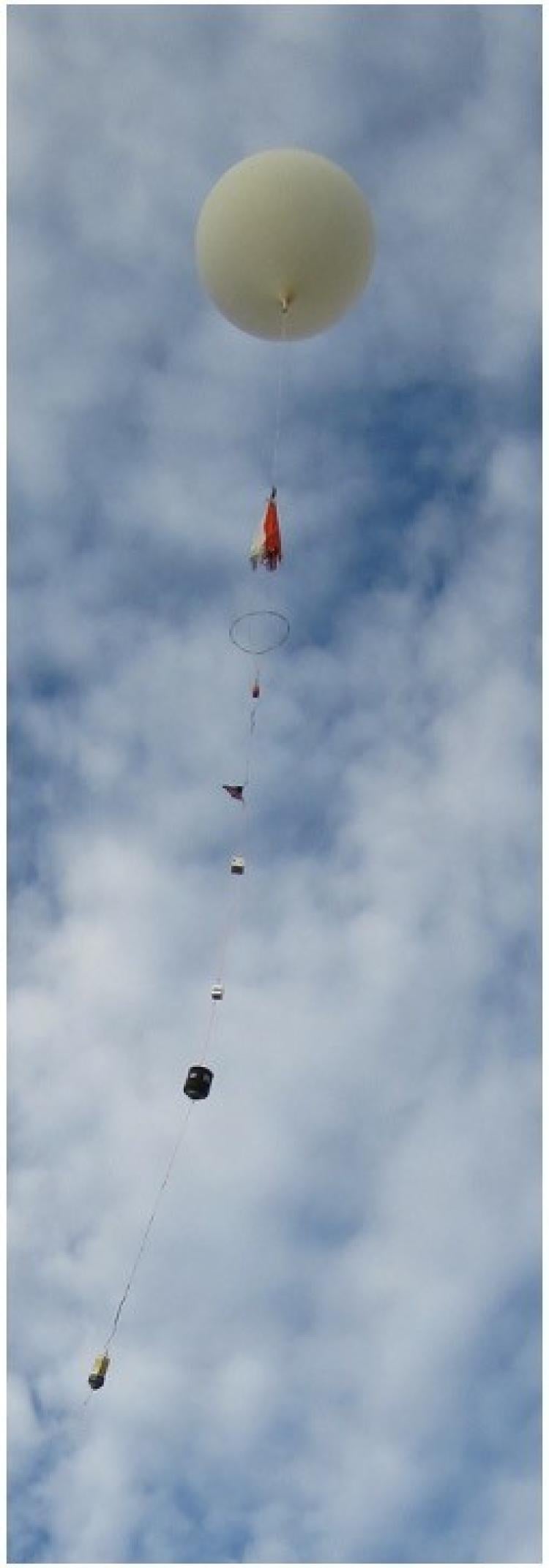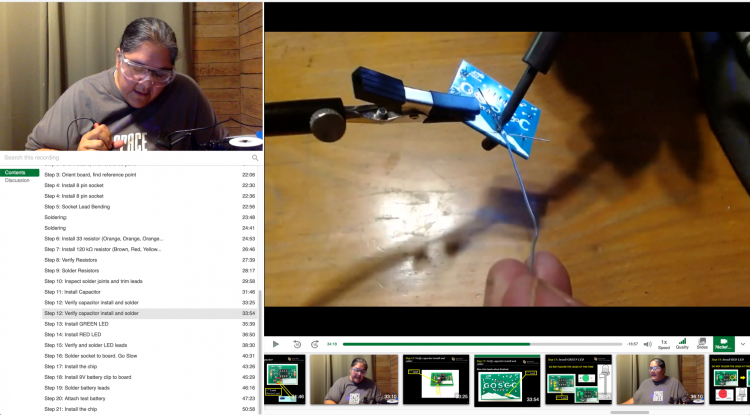Launching science to near space in a pandemic

A balloon launching with a line of payloads.
Headline image: A payload at 100,000 ft where the normally blue sky has faded to the blackness of space.
Students build high-altitude balloon payloads from home with Colorado Space Grant
College students across Colorado are building science experiments that will travel into the stratosphere – and they are doing all the work at home.
It is all part of a Colorado Space Grant Consortium extracurricular initiative for undergraduates at the University of Colorado Boulder in the Space Minor program as well as students at Space Grant partner colleges across the state.
Participating students are building a high-altitude balloon payload packed with sensors to study the upper atmosphere.
"They're learning how to solder, integrate sensors, read data sheets, and program," said Ashleigh Bailey, director of the Space Minor program.
Each payload is about the size of a toaster but weighs only 200 grams. It includes temperature, pressure, and humidity sensors as well as an accelerometer. Students have to do soldering and programming on an Arduino micro-controller for the payloads, which run off a 9-volt battery.
“The project teaches foundational skills that then are used in future years on bigger projects,” said Bernadette Garcia Galvez, deputy director of Colorado Space Grant.
Pandemic Changes
It is a project Colorado Space Grant has done for nearly 20 years. In a normal year, the work would be done at an in-person weekend workshop, but of course, 2020 is anything but a normal year.
COVID-19 led Bailey and Garcia Galvez to redesign the workshop as an at-home project. Doing so, however, actually opened up the effort to more students than they could normally serve in-person, and they plan to continue the at-home option even after the pandemic is over.
"This is normally a two-day weekend event, but this widens participation for students who have a heavy semester load and can't take time from studying for their regular classes to do it," said Bailey. "It also completely opens the door for someone at a partner school in Durango who doesn't want to drive eight hours to Boulder in January to attend."
While Colorado Space Grant is housed at CU Boulder, it has 21 partner community colleges and universities across the state that work together on an array of projects, research and outreach. It is a NASA-funded center and aims to expand access to aeronautics and space to more people.
The balloon payload project is designed for underclassmen, many of whom have no previous soldering or programming experience. Although many Space Minor students are engineering majors, almost 60% come from outside the College of Engineering and Applied Science.
Online Learning
To revamp the project for at-home use, Bailey and Garcia Galvez, along with a team of students and alumni, spent the summer designing take-home kits with the required components and tools and recording a series of work-at-your-own-pace videos guiding students through the process.
First-time soldering can be intense, whether at an in-person workshop or in the comfort of your bedroom, but Garcia Galvez said she is pleased with how it is going.
"Soldering is one of the first things we do in Space Grant with new students. It's a quick way to build confidence. We tell students it's OK to be nervous. It's OK if your solder joint looks a little blobby. Most students do a great job," Garcia Galvez said.
The students also have plenty of opportunity to get assistance if they need it. Staff members offer virtual visits and remote office hours to walk through trouble spots, and participants complete informal weekly reports so Bailey and Garcia Galvez can reach out to anyone who is struggling.

Upcoming Launch
The completed projects are due this week and will launch on Nov. 7.
Typically, students are welcome to attend the balloon launch, which is generally done in a rural area north or east of Denver to avoid flight paths for Denver International Airport. Unfortunately, due to COVID-19, this time around the launch will be attended only by staff. Students will mail back or drop off their individual projects at the Space Grant offices prior to launch.
Local non-profit, Edge of Space Sciences, provides launch, tracking, and recovery operations. The balloons will soar into the stratosphere, 80,000 to 100,000 feet in altitude, before popping and falling back to Earth. The payloads will then be returned to students so they can download data and prepare their final reports.
Although the changes to the workshop were instigated by COVID-19, the team is excited about how necessity may open up the science to larger groups of participants in future semesters.
"This is enabling our first-semester students, many of whom may not have done a hands-on activity, to do something that'll go to near space," said Garcia Galvez. "It’s really cool that we’re able to offer this to students, especially right now.”

